Ted Rabinowitz's Blog, page 14
August 24, 2015
Old Benedict Cumberbatch News
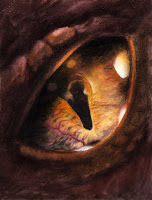 In case you hadn't already seen it, this is the video of Benedict Cumberbatch performing Smaug in the motion capture studio. I love these 4+ minutes far more than the movie itself. And to me, it encapsulates some of the things I like about Cumberbatch as an actor, and about many British actors in general (at least, the ones who make it over the pond in a significant way):
In case you hadn't already seen it, this is the video of Benedict Cumberbatch performing Smaug in the motion capture studio. I love these 4+ minutes far more than the movie itself. And to me, it encapsulates some of the things I like about Cumberbatch as an actor, and about many British actors in general (at least, the ones who make it over the pond in a significant way):1. He doesn't hold back. It doesn't matter that he's playing a dragon, in a fantasy, in a motion capture leotard - he gives it the same energy and
2. He is clearly trying to imagine what his body would feel like as a dragon's body. He's physical. This is a motion-capture session, and he's giving them the motion to capture. Furthermore, his physical choices are obviously completely different from the ones he makes elsewhere. (Sherlock and Khan, compare and contrast.)
3. He is clearly enjoying himself, and he doesn't give a rat's arse about looking cool. 'nuff said.
Published on August 24, 2015 11:24
August 18, 2015
The Proof Is Here!
Published on August 18, 2015 10:30
This Is Why You Should Follow George Takei's Twitter Feed
Published on August 18, 2015 08:17
August 17, 2015
Do You Love Cats? I Don't.
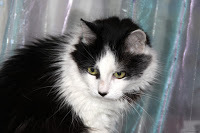 I don't love them. I like them. They're cute, and easier to keep around than dogs. And of course, because I like them, but don't luurrvv them, they absolutely adore me.
I don't love them. I like them. They're cute, and easier to keep around than dogs. And of course, because I like them, but don't luurrvv them, they absolutely adore me.But that's neither here nor there. There are a bunch of cat-haterific tales of cats out there: Cats as evil manipulators, environmental disasters, etc. And now there's an article about whether all that noise is true.
Turns out - much not, some yes.
Published on August 17, 2015 11:37
August 16, 2015
Number 18 In the Top 20!
 Amazon.com has bestseller categories for every type of book. The categories follow the BISAC system (Book Industry Subject and Category, if you were wondering). Anyway, in the Books > Science Fiction & Fantasy > Fantasy > Humorous Bestseller list, guess who is #18?
Amazon.com has bestseller categories for every type of book. The categories follow the BISAC system (Book Industry Subject and Category, if you were wondering). Anyway, in the Books > Science Fiction & Fantasy > Fantasy > Humorous Bestseller list, guess who is #18?That's right! It's The Wrong Sword.
Granted, it's a smallish category. But that still means I am on the SAME AMAZON FRONT PAGE as books by Ben Aaronovitch, Diana Wynne Jones, Neil Gaiman, and - yes! - Terry Pratchett. (When you're up there with the Brits in Humorous Fantasy, you're automatically in the Big Leagues.)
And since most browsing shoppers only check out the first page of these lists, being #18 out of #20 is a Big Deal.
Published on August 16, 2015 19:11
August 14, 2015
And Carrying on the Asimov Theme...
In Isaac Asimov's The Caves of Steel, most of the nutritional needs of the vast population of Earth is met with specially-engineered fungi and yeast. It's a not-uncommon trope elsewhere in SF, too - Vernor Vinge uses it in A Deepness in the Sky, for instance, when he mentions the "bactries" the starfarers use to concoct organic materials.
So, we took a step down that road today.
So, we took a step down that road today.
Published on August 14, 2015 09:30
Why's That So Good? Isaac Asimov - Foundation
 The info dump is the classic danger for any writer of speculative fiction. You've put so much thought and effort into creating a world unlike our own...how are you going to convey that world to your readers, so that they can understand your story? If you tell too little, maybe they'll be lost, and give up. But tell too much, and their eyes glaze over. All too often, the new writer dumps dozens of pages of exposition onto the reader before ever getting to the story itself, and is subsequently savaged by his or her writers group.
The info dump is the classic danger for any writer of speculative fiction. You've put so much thought and effort into creating a world unlike our own...how are you going to convey that world to your readers, so that they can understand your story? If you tell too little, maybe they'll be lost, and give up. But tell too much, and their eyes glaze over. All too often, the new writer dumps dozens of pages of exposition onto the reader before ever getting to the story itself, and is subsequently savaged by his or her writers group.That's the classic mistake. The info dump.
Needless to say, many of the Grand Masters of science fiction were also Grand Masters of exposition. They found dozens of sneaky, clever ways of getting the information into the story, and a few kludges too.
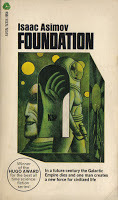 For instance, let's take a look at one of Asimov's most famous series, Foundation. The three books of the original series all depend on a single, overarching idea: That in the far future, mathematicians have systematized sociology, psychology, political science and economics into a discipline called "psychohistory." Psychohistory is so powerful that it can be used to predict the future of societies with accuracies into 90% and beyond. Of course, there are limits to what it can do, and laws that it must follow. The biggest law is that these predictions won't work if the subjects know about them; the next biggest law - and the one that is tricky for a writer - is that psychohistory doesn't apply to individuals, only to large groups of people...the larger, the better. And this is a big problem for a writer, because by definition, psychohistory is utterly removed from individual characters. And when all is said and done, fiction isn't about ideas; it's about individuals.
For instance, let's take a look at one of Asimov's most famous series, Foundation. The three books of the original series all depend on a single, overarching idea: That in the far future, mathematicians have systematized sociology, psychology, political science and economics into a discipline called "psychohistory." Psychohistory is so powerful that it can be used to predict the future of societies with accuracies into 90% and beyond. Of course, there are limits to what it can do, and laws that it must follow. The biggest law is that these predictions won't work if the subjects know about them; the next biggest law - and the one that is tricky for a writer - is that psychohistory doesn't apply to individuals, only to large groups of people...the larger, the better. And this is a big problem for a writer, because by definition, psychohistory is utterly removed from individual characters. And when all is said and done, fiction isn't about ideas; it's about individuals.Imagine psychohistory in the hands of a novice writer. "How can I explain this idea to my readers?" he asks himself. "I know! I'll just explain it. I'll have the inventor of it give a lecture." Then would follow some dozen pages of exposition as the reader's eyes gently droop, and sag, and close...
But Asimov, instead of giving readers an info dump, embedded the information in conflict. Human, individual conflict. The first chapter in Foundation doesn't deal with Hari Seldon's discovery of psychohistory; it deals with the hostile reception Seldon and his fellow mathematicians receive when they make their predictions known.
Psychohistory has revealed that the Empire in which Seldon lives will collapse within five hundred years. Needless to say, the Imperial government doesn't like that prediction...and the actions it takes against Seldon and his responses to it are the story. Gaal Dornick, the math student who is joining Seldon's team, is shadowed and investigated by Imperial Security; he and Seldon are arrested; there is a "trial" by the Empire's Orwellian Committee for Public Safety; and finally Seldon arranges a compromise with the CPS, after which he reveals to Dornick that the punishment of exile the CPS forces on him has been his goal all along. Psychohistory is the background of the story, but the story itself is about the conflict. And it's brief, too...and from that moment on, the reader is grounded in psychohistory, and accepts it for the rest of the series.
The two scenes in which the reader learns the most about psychohistory are fraught with tension. The first is a job interview, in which Dornick proves himself to Seldon by working out mathematical functions that he doesn't realize at first apply to the Empire. The second is the trial by the CPS in which Seldon (and to a lesser extent Dornick) must explain psychohistory to defend themselves.
Conflict leads to tension leads to drama.
Artful, is what it is. Good craft.
Published on August 14, 2015 08:33
The Paper Proof Is on Its Way
The book proof of The Wrong Sword is on its way; it will be here by Monday. I may make one or two changes. Then it will be available in all its dead-tree glory alongside the electronic version on Amazon and elsewhere.
There's a lot to be said for physicality. There were certain cover-art questions that I couldn't answer based on files on a screen.
Fingers crossed.
There's a lot to be said for physicality. There were certain cover-art questions that I couldn't answer based on files on a screen.
Fingers crossed.
Published on August 14, 2015 07:58
August 12, 2015
An Interesting - and Creepy - Brain Question
SQUICK WARNING - I don't usually cover gross stuff here. But this question managed to send little spider feet across my forehead, so if "brain abnormalities" squick you out, move along.
There's a condition called hydrocephalus - water on the brain - in which the sufferer's brain development leads to much of the brain's cells being replaced with fluid. And yet, some patients still displayed normal intelligence, leading one researcher to wonder if we really need our brains to think!
This neuroscience entry suggests that, yes, Amelia, we DO need our brains to think, and here's why. And there are pictures. So, squick. But really, really interesting.
There's a condition called hydrocephalus - water on the brain - in which the sufferer's brain development leads to much of the brain's cells being replaced with fluid. And yet, some patients still displayed normal intelligence, leading one researcher to wonder if we really need our brains to think!
This neuroscience entry suggests that, yes, Amelia, we DO need our brains to think, and here's why. And there are pictures. So, squick. But really, really interesting.
Published on August 12, 2015 05:50
August 11, 2015
Which Book Jacket?
So what do you think, folks: Book jacket with solid spine title?
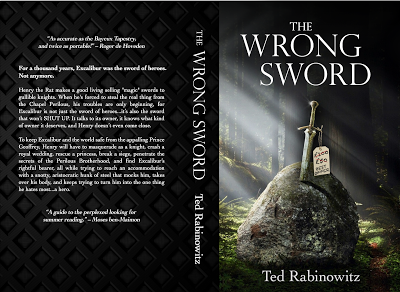
Or book jacket with a photo oval on the spine as well?
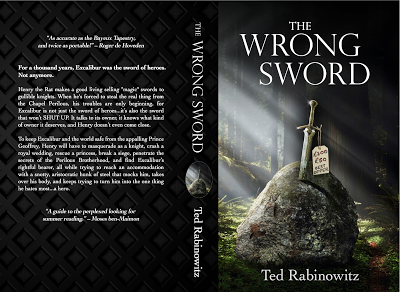

Or book jacket with a photo oval on the spine as well?

Published on August 11, 2015 20:06





